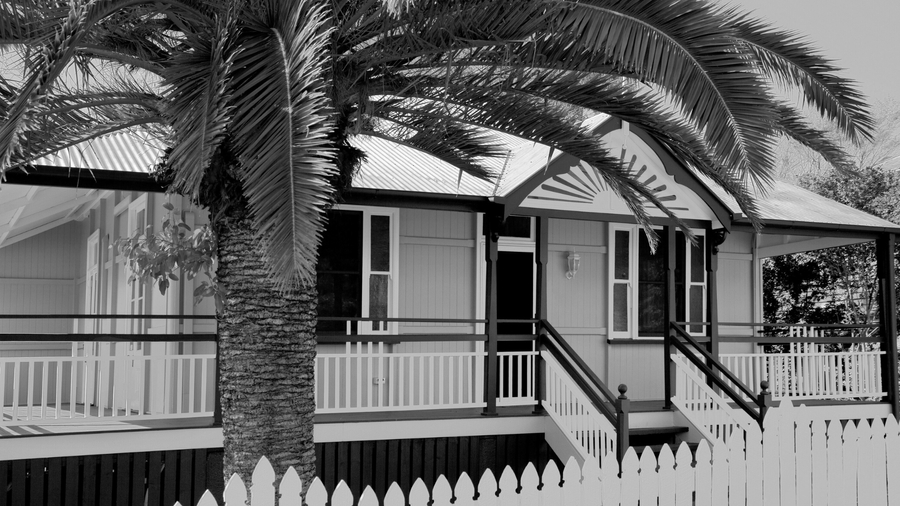National Construction Code 2022 (NCC) update: A glimpse into Queensland’s leading role in home accessibility and energy efficiency
17 October 2023
The National Construction Code (NCC), originally established in 2022, has undergone substantial changes that will impact Queensland’s construction industry, ushering in higher standards of energy efficiency and accessibility for new residential properties.
Starting on the 1st of October 2023, these transformative amendments signify a significant step forward.
The NCC 2022 came into effect on May 1, 2023, and within Queensland, it will be introducing the Modern Homes standards in a phased manner. These standards are designed to ensure that new residential properties meet stringent criteria for both accessibility and energy efficiency.
Two phases:
- Modern Homes Accessibility Standards will be gradually introduced starting from October 1, 2023. New homes will need to incorporate design features such as step-free entryways and wider doors and hallways to enhance safety and long-term use.
- Modern Homes Energy Efficiency Standards are scheduled to commence on May 1, 2024. energy-efficient features like ceiling fans and energy-efficient hot water systems will be required to meet energy efficiency standards, resulting in savings on energy bills for new homeowners.
Queensland stands at the forefront, being the first state to implement these rules. Meanwhile, other states like Victoria, New South Wales, and South Australia have opted to incorporate these changes into their building codes in 2024.
Learn more about Queensland’s implementation of the Modern Homes standards here.
Balancing homeowner’s needs and the industry’s needs
In recognition of the varying needs of homeowners and the construction industry, the Queensland Government has opted for a phased approach to implement the NCC 2022. This approach spans from October 1, 2023, to May 1, 2025, allowing for a smoother transition.
Key takeaways from the NCC 2022 update
- Three key focuses: The NCC update targets housing accessibility, energy efficiency and condensation challenges.
- Improved access: New builds must be more accessible from October 1, with features like step-free entryways and wider doors.
- Energy efficiency boost: Higher energy star ratings become mandatory from May 2024. New builds will need to meet a minimum energy star rating of seven out of 10, an upgrade from the previous standard of six.
- National adoption: The changes were nationally agreed upon in 2020 but faced delays due to labour and material cost concerns.
- Cost and benefits: Although the new code may increase initial building costs, it can lead to long-term savings for homeowners due to reduced maintenance and energy expenses.
- Grandfather clause: The rules don’t apply to contracts signed before October 1 2023.
- Phased approach: The HIA states that Basix changes will be phased in. Clients with contracts signed before October 1, 2023, won’t be required to meet the new regulations, saving on upgrade costs. If clients want the new standards, they can include them in the contract for an added cost.
- Economic and environmental positives: Expect average yearly savings of $185 on electricity bills, reduced carbon emissions by 1.64 million tonnes and more comfortable homes.
- Economic impact: Research suggests a 7-star energy rating can boost a home’s sale price by nearly 10%.
Starting October 1, 2023, new homes and units in Queensland must have:
- At least one step-free entry.
- Wider internal doors and corridors.
- Step-free access to bathrooms and showers (Queenslander-style homes are excluded).
- Accessible ground-level or entry-level toilets.
- Minimum energy star rating of seven out of 10 (up from six) for new buildings.
Decoding the NCC: Shaping Australia’s building standards
The National Construction Code (NCC) is the comprehensive rulebook for constructing buildings across Australia. Often known as NCC 2022 (its adoption year), it encompasses construction standards, guidelines and compliance requirements, spanning various domains, including plumbing and drainage.
NCC 2022: This version, initiated on May 1, 2023, brings significant changes aimed at bolstering sustainability, energy efficiency and residential comfort. Some changes are already underway, with more effective from October 1, 2023.
Historical shift: NCC 2022 represents one of the most substantial updates since the merger of the Building Codes of Australia and the Plumbing Code of Australia in 2011.
Energy efficiency: The delay in enforcing Modern Homes energy efficiency standards recognises the need for additional compliance tools, granting the industry more preparation time. These standards ensure that new residential structures prioritise accessibility and energy efficiency.
Gary Rake, CEO of the Australian Building Codes Board, says “It’s been over 10 years since the last residential energy-efficiency update to the National Construction Code in 2010. And it’s been over 10 years since the industry voluntarily promised to introduce accessibility standards with new homes.
“The homes we’re building now are supposed to be good for 50 years – we need to think about the requirements of the next two and three generations.
“Every month we delay locks people into outcomes that are below the standard they should be.”
Gary Rake, CEO of the Australian Building Codes Board
Department of Energy and Public Works support for Modern Homes Standards
The Department of Energy and Public Works is actively facilitating the adoption of Modern Homes standards within the industry. Their support includes:
- Exemptions: They are granting an 18-month exemption period for narrow lots (12.5 metres or less in frontage) and small existing class 1 dwellings (55 square metres or less). Ongoing exemptions are available for specific situations, such as impracticality in applying the new standards to bathroom renovations and general repairs and maintenance.
- Flexibility: They provide greater flexibility for implementing step-down showers and floor waste grading, ensuring adaptability while maintaining homeowner protection.
- Exceptional cases: Step-free access requirements will be waived for houses on small or steep lots, as well as the iconic Queenslander-style homes. This flexibility empowers designers and builders to choose cost-effective options, preventing future expensive retrofits.
- Unaffected provisions: The phased approach to Modern Homes standards doesn’t affect other NCC 2022 changes. For instance, provisions related to condensation management, on-site renewable energy generation and storage, and electric vehicle charging equipment will commence on October 1, 2023, as scheduled.
Breaking down the NCC 2022
- Elevating housing accessibility and inclusivity
- Pioneering energy efficiency
- Tackling condensation and mould
Elevating housing accessibility and inclusivity
One of the biggest changes introduced by the NCC 2022 pertains to Liveable Housing Design requirements. These intricate details usher in comfortable, accessible living spaces for people with disabilities, the elderly and their families.
- Step-free entrances for all dwellings.
- Smooth internal movement and accessible internal doors.
- Ground-level toilets and convenient, hobless shower recesses.
- Reinforced walls for future grabrail installations.
- Safer, adaptable stairways.
Pioneering energy efficiency
The NCC update prioritised greener living. These measures encourage innovation, from optimised windows to solar panels, reducing greenhouse gas emissions and energy costs. It demands:
- Minimum 7-star thermal performance ratings (ACT & NSW).
- Annual energy use budgets for residences applying to air conditioning, hot water, lighting, and photovoltaics (solar panels) (ACT).
- Higher energy targets in BASIX assessments (NSW).
Efficiency goals are pursued through strategies like optimising window orientation, adopting double-glazed windows and doors, enhancing insulation with higher R values, integrating ceiling fans, selecting lighter roof and wall colours (except in Alpine areas), reducing ceiling penetrations and exploring photovoltaic systems (solar panels).
For a comprehensive understanding of these energy efficiency changes, consult the Housing Energy Efficiency handbook from the ABCB.
Tackling condensation and mould
NCC 2022 addresses condensation and mould concerns to create healthier living environments. It does this through:
- Custom vapour-permeable membranes based on climate zones.
- Mandating specific membrane classes for different climates.
- Redirecting exhaust fans away from roofs.
- Implementing timed fan and light systems for bathrooms and laundries.
- Specifying roof ventilation requirements (excluding properties with a Bushfire Attack Level – Flame Zone).
Impact of changes on QLD builders
Queensland leads the way as the first state to embrace the new regulations, while Victoria, New South Wales, and South Australia are set to follow suit in 2024.
If you’re currently building a property in Queensland, these changes will directly affect you in the following ways:
- While the new code may initially increase building costs, it promises long-term savings for homeowners. These rules won’t apply to contracts signed before October 1.
- The Australian Building Codes Board anticipates a modest 1-2% increase in building costs, which is expected to decrease as the industry adapts to the changes.
- Queensland Minister for Energy, Mick de Brenni, suggests that new homeowners could save an average of $185 annually on electricity bills, thanks to solar panels and improved insulation.
- Households can recover these costs over a home’s lifetime through energy bill savings. Independent research cited by the CSIRO indicates that achieving a 7-star energy efficiency rating could raise a home’s sale price by almost 10%.
- The introduction of seven-star energy efficiency provisions aims to reduce greenhouse gas emissions, provide year-round comfort, and alleviate energy expenses, ultimately offsetting initial construction costs.
- Moreover, the new accessibility standards will enhance housing options for Queenslanders with disabilities and older Australians. New homes will feature improved entryways, wider doors, corridors and step-free access. Implementing these standards from the start is expected to significantly reduce the cost of future mobility-related home modifications, which can be up to 22x more expensive when retrofitted.
Shaping tomorrow’s homes, today
These changes will significantly reduce or even avoid the cost of retrofitting when the mobility needs of homeowners change, and will only enhance the aesthetics of these new homes.
These updates are not only reshaping the way we build homes but also paving the way for a more sustainable, accessible, and energy-efficient future. By staying informed and adapting to these changes, we can all contribute to a better and more inclusive living environment for all Australians.
For more information about the new building standards, including guidance material, visit the Department of Energy and Public Works website.
Learn more about the Modern Homes standards here.
Get Started
Every success story starts with a leap of faith. Start a conversation with us.









